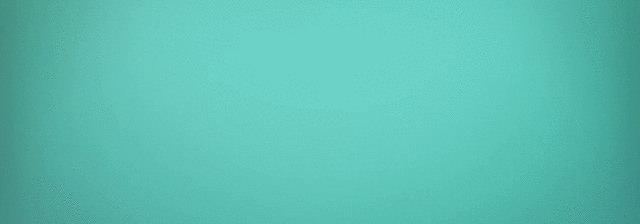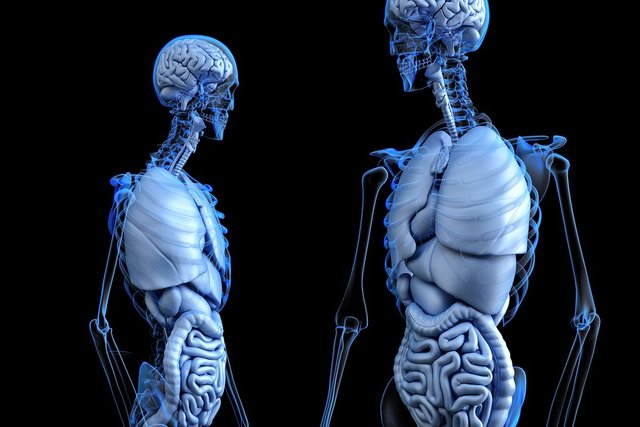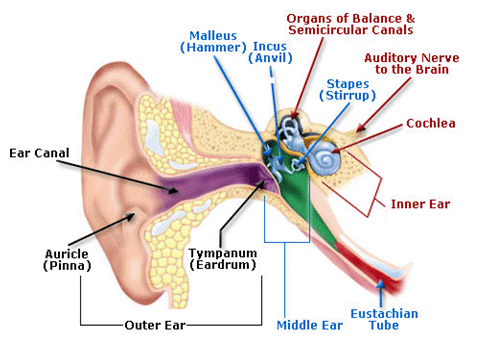The Human Life - Becoming a Person (Part 2)
The first part of this series led us through the stages of a life we once lived, today, we continue this tale as it gets increasingly interesting. Starting with how being able to digest solid food, accelerated our biological growth, we shall also see how our lives biologically unfolded. It no longer feels just like the story of one human life, we begin to understand that it is the story of all our lives. To do this successfully, we view our story from a Radically distinctive point of view - “Inside the Human Body”
Being a year old as children we have fully developed most of our important senses, the next task at hand is how to learn and grow up.
Solid food!
Milk teeth were already present in our gums since birth, they form in the womb and begin to show themselves around this time in a baby's life. One by one they burst through the tender gum of the infant; the child feels the pain but the mother knows that it is progress. The process of digestion starts in the mouth, as the teeth chew on the food unique glands under the tongue produce saliva which helps to break down the food.
Saliva is also responsible for maintaining clean and slippery passage in a 12 hours / 4 meters journey through the gut. Our food passes to the stomach, through the small intestine, then the large intestine and - while the road is still slippery - waves of compressing muscles keep pushing the food through these areas. You should know that this process is called Peristalsis and it is so powerful that we can eat and start digestion upside down.
Food enters the stomach through a hole on top, this dense bag of muscle (the stomach) squashes, squeezes and stirs vigorously! making it thickly creamy. While this is going on; stomach acid is also continuously breaking the food down. This acid is so dangerous the walls of the stomach has to always cover itself with mucus for protection because without it we will develop stomach ulcers. Everything here takes about an hour and on completion, the stomach sends out the food through another hole called the pyloric sphincter (a small circular opening between the stomach and the duodenum).
Now the food enters the small intestine, this is a 3 and a half meter coil like tube made for the total absorption of nutrients.
First, the pancreas, a large elongated exocrine gland, located behind the stomach secretes pancreatic juice and insulin to neutralize the stomach acid.
As soon as this is done the liver releases bile which further breaks down carbohydrates into smaller droplets because they are easier to absorb - all these in preparation for the absorption. Inside the walls of the small intestine we find millions of microscopic projections, they act like a sponges making it easier to absorb nutrients.
After about 90 minutes the process moves into the large intestine through another sphincter (this type particularly made to prevent the food from going back). There are now very few nutrients left to absorb, our system leads the food - or at least what's left of it - to the large intestine so that all the water will be extracted. Here all that is left is a lot of slimy waste food, dead cells, and an unbelievable amount of bacteria.
It helps to know that these bacteria in the large intestine are not infectious, in fact; they produce complex enzymes that are tasked with breaking down complex carbohydrates (once we couldn't otherwise digest) in our food.
After 12 hours we expel every other thing through the anus. It is usually grand, the first time we excrete, we feel a sense of joy from the relief, at least until the smell reaches our nose and our brain labels it as irritating. it is at this point now that we start to cry.
Explore
We can crawl because our bones are stronger - they need to be - we are getting very heavy. When we are born our bones are almost completely cartilage, the same stuff that holds the shape of our ears. This material is very flexible, it is the reason we are able to squeeze out of our mother's womb. But cartilages are too weak to protect the organs and keep us up so it gradually hardened into bone (this process looks like cheese expanding in its area, shrinking the radius of every hole as time passes). Cells called osteoclasts are there to produce necessary minerals that turn cartilage into strong bones gradually and some of these bones fuse together. We are born with a cross-like opening on the top of our skull, or brains remain exposed to more danger until our bones grow older and close us up.
Okay, we really want to get around but first, we must learn how to walk. We keep failing until we find out that the key to walking is not strength, it is the balance. To understand balance you can think about the ears again, beyond the ossicles, the bones we use for hearing, there is a figure coiled in a loop of 3 different directions (each circle). Each loop is almost the size of a small gold coin and their areas are orientated in the three coordinates of space. They are part of the ear but do not have anything to do with hearing, filled with liquid, they work like some kind of 3-dimensional compass. They tell us our orientation in space relative to an object (the ground). The liquid inside this tube are constantly in motion as we move about and they smash the inner walls of the tube hitting sensitive flexible tiny hairlike strands. The collective position of all the hairs present sends data to the brain through electrical impulses that enable us to experience our position in space. They help us balance and then we learn how to walk, this is childhood.
Start Chatting
Some kids learn to say a few words after their first birthday, and by the time they are 2 years old, they know enough words to get a message across. At this age, we learn about 10 new words every day. We use the right side of our brains to connect words and complex thoughts. Language is a very big difference between us and other animals, by talking we now have the ability to exchange thoughts and ideas. As we develop we begin to notice that we are people, back then as babies seeing our image in a mirror didn't mean anything but lines, now they mean a lot to us.
There are hardly any other mammals that spend such a long time preparing for adulthood because it would be a waste of time, they have to mature quickly so they can survive in the hunting world. By the age of 5, for instance, most mammals will already be reproducing, but our DNA instruction puts a time on our growth rate - the brain needs enough time to learn. Our brain has a massive 100 billion nerve cells per neurons which produce enough electrical energy to keep the light bulb in a room on for a day. These neurons, however, communicate by sending electrical impulses, every thought is formed as a fraction of the charges released. This is to say that when we hear a new sound its wave properties is converted (inside the ear) to electrical impulses in our brain, the brain will learn if the connection created by the firing is strengthened by repetition. The neurons send out tiny tentacles connecting themselves for better communication, thinking about it the whole place looks like a room entirely filled with floating rope with multiple entropic twists and connections.
Image: Mixed rat brain cultures stained for coronin 1a, found in microglia here in green, and alpha-internexin, in red, found in neuronal processes. Antibodies and image generated by EnCor Biotechnology Inc.
They meet in a
Synapse (the junction between two neurons (axon-to-dendrite) or between a neuron and a muscle)
Where the patterns formed by this process is what we call - Memory. Later when we are asked to recall that memory, neurons fire following the same pattern.
Outside
Image: Histological blood smear of an Eosinophil surrounded by Red Blood Cells and Platelets
As we keep on getting along with the world being kids, we tend to sustain injuries more times now than later. Immediately the skin is broken your body begins to work, blood capillaries constrict to reduce the diameter of the tear and bleeding, next: Platelets, a type of blood cell start to make the blood around the cut become thick, and as time passes viscosity in that area of the blood becomes increasingly high, stopping the flow-out of blood. Our cells immediately begin to multiply, creating a bigger and stronger replacement for those worn out tissues. The injury heals and in most cases, our skin return to normal or at least the scars become almost undetectable.
Our interaction with other people increase our risk of catching an infection, luckily by now our immune system is active, and our body has many defence systems. Eyebrow, eyelashes, ear hairs and nasal hairs all catch airborne bacteria trying to enter our body. Sweat, tears, and mucus wash them off. Our skin is always shedding away its outermost cells taking bacteria with it.
Our mouth is also vulnerable, recent research has shown that: If the number of pathogens found in the mouth is found in places like the heart it would cause serious problems. Fortunately, saliva has in it an enzyme created for the purpose of killing bacteria. We create nearly 1 and a half litres of saliva every 24 hours.
When a pathogen like Chicken pox breaks through all these defences and infect the blood, our immune system must fight back; If you can almost imagine it now, thousands of tiny viruses travel alongside blood cells swimming through the flow of current in the blood way - a Virus hijacks a cell, uses the cells abilities to manufacture thousands of copies of itself, until the cell explodes! Spreading the pathogens to other cells and replicating the process. Symptoms of chickenpox include rash, fatigue, and fever. This fever is a sign that the body is fighting back, a high temperature is used to slow down the viruses which reproduced ailing at high temperatures.
The fight is still on: white blood cells go into action attaching themselves to the infected cells, in the struggle they kill the cell but it kills the virus too, and in the end we win, taking control over our health once more. It is true that we may not like the process but infections like these make our immune system come out strong in the end, our body creates memory molecules together with the antibodies so that if the virus enters our blood again our cells attack it immediately and kill it before anything spreads. This makes childhood the best time for Vaccination: Small doses of viruses that will help the immune system stay on the alert mode by making them body create antibodies for the treat.
Childhood is almost over and at the age of 11, we are on the threshold of adolescence. But first we will discuss the body's first surges in our hormones in part 3: THE TIME WE MATURE.
See you soon!
References
Wikipedia - Adaptation to extrauterine life
Wikipedia - Beginning of human personhood









I always pity the infants when teeth start growing from their tender gum. The pain is so much cause they cry very loudly for few days. Though, I passed through this stage, even you @agbona. But just wondering in the science & technology world of today, there should be a way this pain be avoided.
Interesting writeup brov!
Well, thanks for your feedback.
About managing the pain infants go through during the teething stage, well that will be a difficult one, as with everything in life, teeth development is part of the growth process. Although I haven't given it any serious thought, I believe the teething powder and other remedies can be administered to the infant to manage inflammation, guard against infection and possibly manage pains.
If you are a Marvel fan, you should be aware of the tremendous pain Professor Banner goes through while morphing into the Hulk. Growth can be painful, and teething is no exception.
Interesting article once again, this series looks like one to watch out for.
Good work @agbonna
Many thanks, buddy.... great to see you here again!
Hi @agbona!
Your post was upvoted by utopian.io in cooperation with steemstem - supporting knowledge, innovation and technological advancement on the Steem Blockchain.
Contribute to Open Source with utopian.io
Learn how to contribute on our website and join the new open source economy.
Want to chat? Join the Utopian Community on Discord https://discord.gg/h52nFrV
Many thanks, guys, thanks for your continued support to the Stem Community
@agbona you were flagged by a worthless gang of trolls, so, I gave you an upvote to counteract it! Enjoy!!
Gracis
@agbona this is a detailed and dood article nice one
Thanks